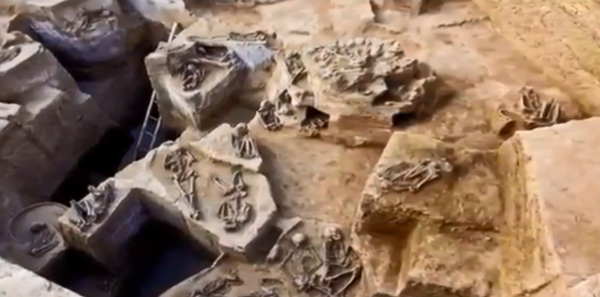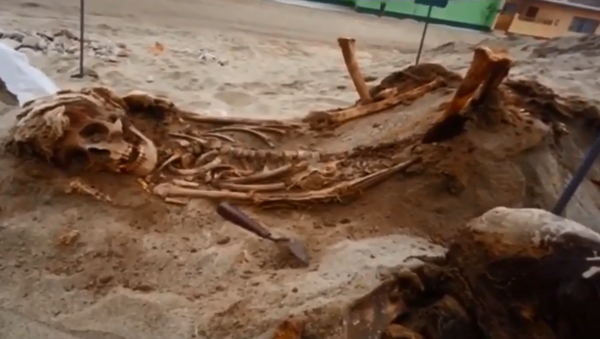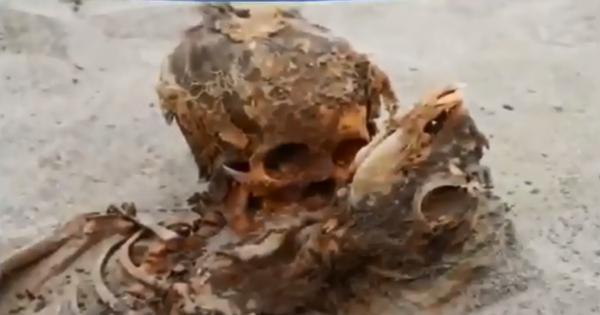Acknowledging that the discovery of human sacrifice has been found among the Aztec, Inca and Mayan cultures, Nat Geo noted that the Chimú find "is unprecedented in the Americas — if not the world."
"I, for one, never expected it," Verano told the magazine. "And I don't think anyone else would have, either."
Researchers found that skeletal remains of children and llamas showed evidence of cuts to the sternum and rib dislocations, suggesting that the person or animal being sacrificed had their chest opened and pulled apart to remove the heart.
The ages of the children ranged from five to 14, while the llamas were carbon dated to less than 18 months old. Archaeologists noted that most of the children had been buried facing west toward the ocean and llamas were looking toward the east at the Andes.
"It is ritual killing and it's very systematic," Verano told Nat Geo.
Analysis of the remains has also left researchers thinking that the cuts "were made by one or more trained hands."
Remains of three adults, a man and two women, were also found close to the children and llamas. Unlike the child sacrifices, officials reported the adults showed signs of blunt-force trauma to the head.

Evidence of a dried layer of mud in part of the site leads researchers to believe that the killings were done in one single event and may have been done as a response to severe flooding that hit the coastline, which is "generally arid."
"People sacrifice that which is of most and greatest value to them," Haagen Klaus, one of the researchers involved in the dig, told the publication. "They may have seen that [adult sacrifice] was ineffective. The rains kept coming. Maybe there was a need for a new type of sacrificial victim."
"There's this idea that ritual killing is contractual, that it's performed to get something from supernatural deities. But it's actually a much more complicated attempt at negotiation with those supernatural forces and their manipulation by the living," he added.
Prieto also suggested that "this just may be the tip of the iceberg."



